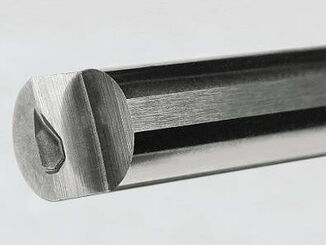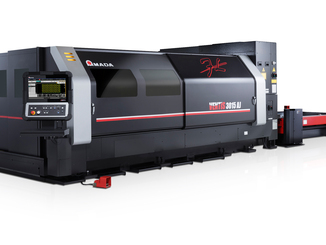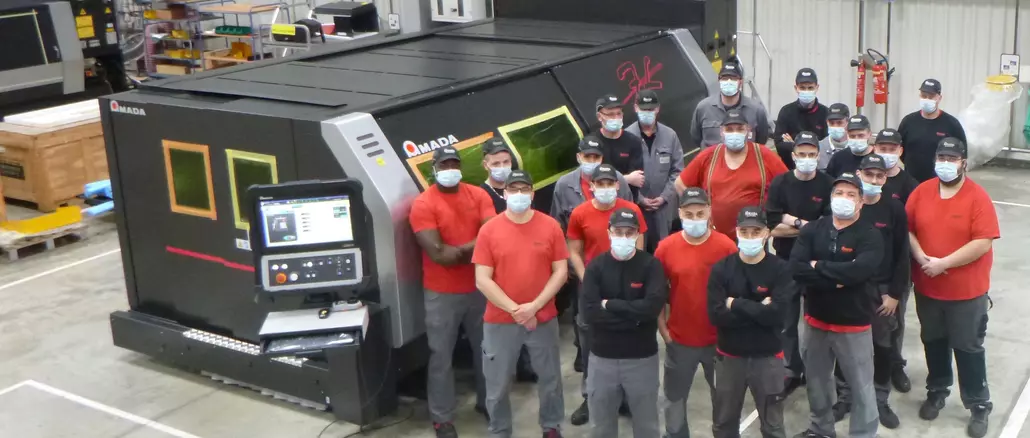
About the 100. At the end of last year, Amada employees received their second order in Europe for a Ventis fiber laser cutting machine with LBC technology (Locus Beam Control).
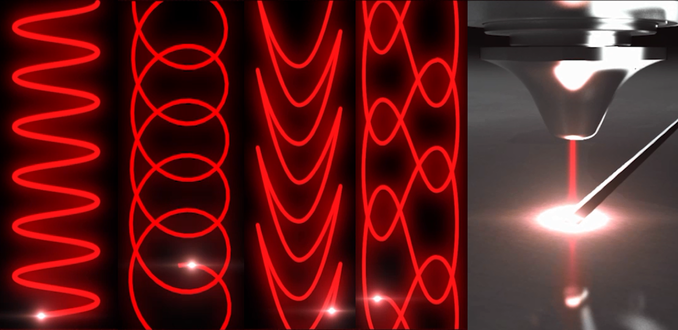
© Amada
Lang Gerätetechnik GmbH ordered the 100. Ventis, complemented by a twin-tower version of Amada’s ASF-EU automation system. In just two years since the launch of Ventis, this remarkable milestone has been achieved, confirming that LBC technology is critical to competitive manufacturing for many customers.
Amada’s Ventis-3015AJ is the first fiber laser cutting machine to feature proprietary LBC technology, which increases both processing quality and productivity. Combined with a new 4-kW fiber laser module with outstanding beam quality, LBC technology sets “an entirely new world standard for laser cutting,” according to Amada.
Lang Gerätetechnik GmbH, based in Roden-Ansbach, was founded in 1976, employs 40 people and is a general supplier to the sheet metal industry. The company wanted to position itself even better in the field of laser cutting and invested in technological progress.
Lang had the following requirements before deciding to purchase a Ventis fiber laser from Amada: significant energy savings over CO2 lasers, high processing speed, and flexibility in material thickness and types (copper and brass). Above all, the price/performance ratio compared to conventional 6 kW fiber lasers was convincing, as was the versatility in production offered by LBC technology. The cutting speed and quality are also impressive compared to machines with higher power, confirm those responsible at Lang.
With conventional fiber laser cutting systems, the energy density decreases as the material thickness increases, resulting in a slower cutting process and a poorer cut pattern. The use of LBC technology, on the other hand, offers flexible adjustment of the beam pattern to suit the application in question, while fully retaining the high efficiency and energy density. In short, LBC technology provides the optimal beam pendant variation, scoring high in quality and speed.
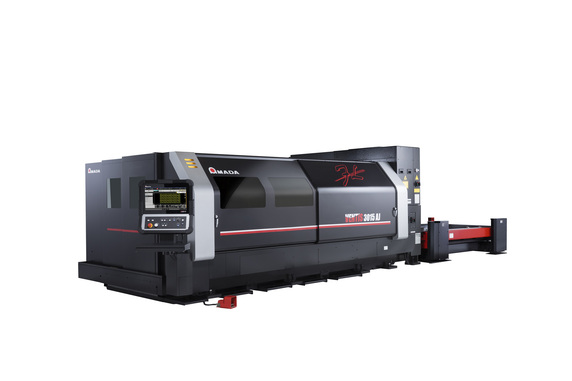
© Amada
To compensate for the loss of energy density, conventional fiber laser systems must resort to beam sources with higher output power. However, this results in higher acquisition costs and higher power consumption. In contrast, Ventis’ specially designed 4-kW fiber laser with only one laser module and LBC technology can reduce power costs by 30 percent, Amada promises.
LBC technology has three main functions: Productivity Mode, Quality Mode and Kerf Control Mode. In productivity mode, the user can achieve a significant improvement in the output rate when cutting with nitrogen. When processing stainless steel, the Ventis with LBC technology is twice as fast as a conventional 4 kW fiber laser cutting system, and even 2 to 3 times faster for aluminum. These performance levels, combined with lower energy consumption, can reduce processing costs by up to 75 percent.
Quality mode can improve surface roughness by about 50 percent compared to a conventional machine, while reducing burrs to less than 10 μm. Recent tests at Amada have shown that 15 mm stainless steel is burr-free after cutting. This eliminates the need for deburring and reduces machining costs. Even in quality mode, a higher cutting speed is achieved than with a conventional 4 kW fiber laser cutting machine.
Finally, the Kerf Control mode enables process-safe processing in automated system operation over a longer period of time. Depending on the material thickness, the kerf width can be extended up to 2.3 times the usual width by using LBC technology.
The Ventis has an enormously wide standard scope of supply, including single-lens cutting, a 16-station automatic nozzle changer, the Amada original “Water Assisted Cutting System” (WACS) for optimum cutting of thicker sheets, an X-conveyor belt, and optimum accessibility from both the head and longitudinal sides.
The Ventis is available in 3,000 x 1,500 and 4,000 x 2,000 mm sizes and impresses with an improved AMNC-3i-Plus control system. This has a self-diagnostic system and a rotary control for easy feed adjustment, a cutting data library with 10 feed speeds per material, saving time by 20 percent. Small complex contours and corners are cut just as reliably as large geometries at maximum speed.
The Ventis 4 kW fiber laser processes 25 mm mild steel, 20 mm stainless steel, 18 mm aluminum, 10 mm brass and 8 mm copper.
Web:
www.amada.de


